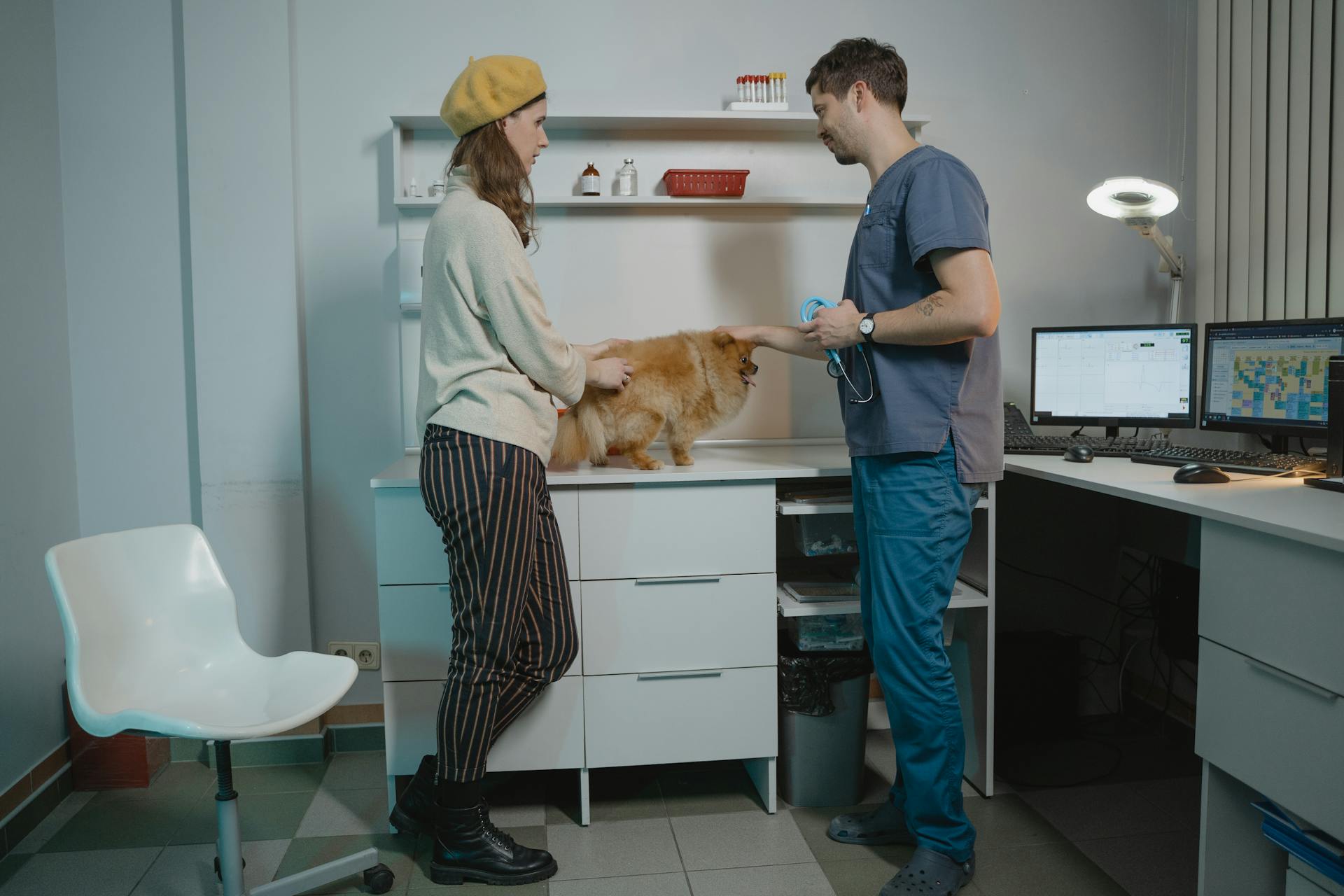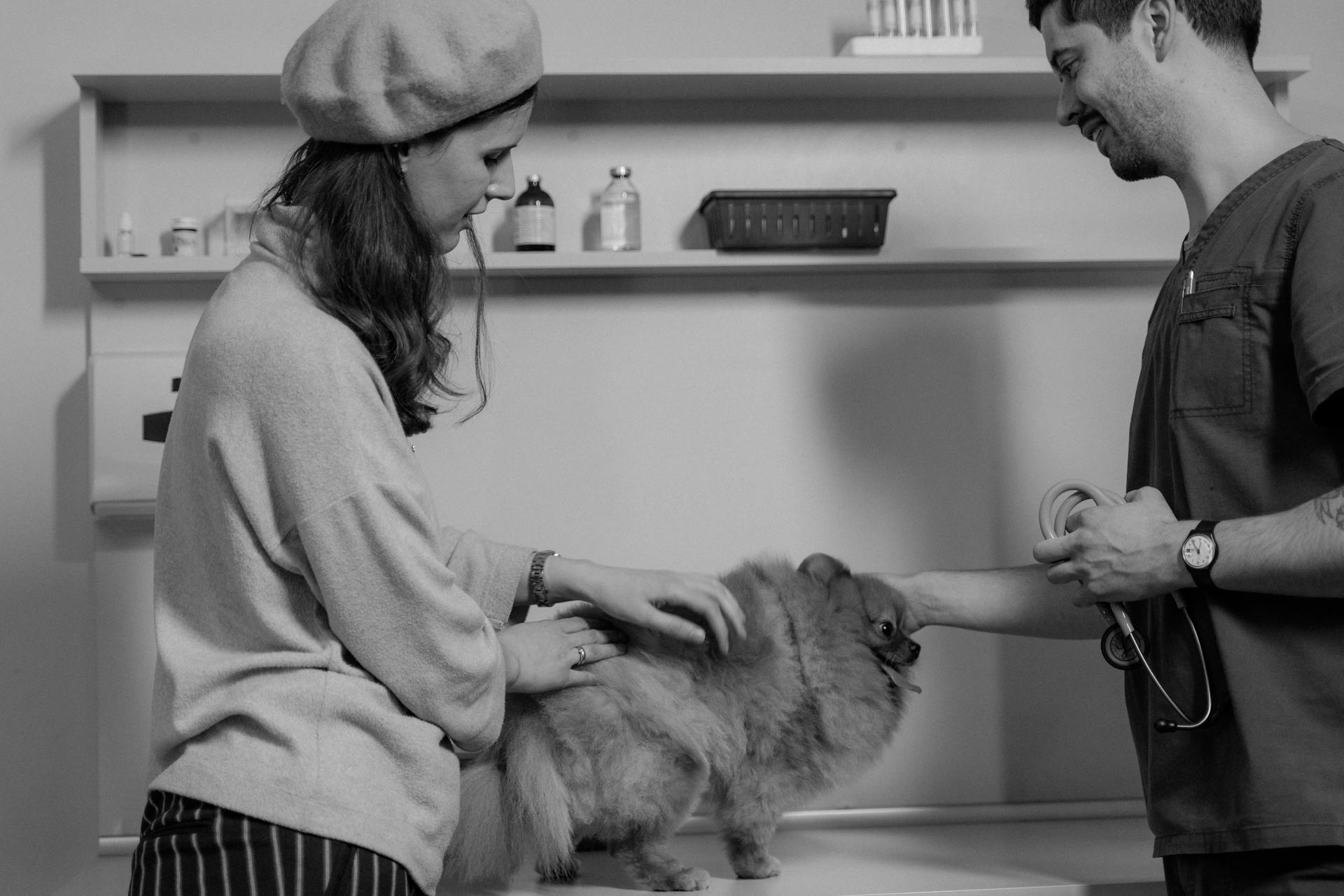
To file a successful pet insurance claim, you'll need to gather the required documents and follow a straightforward process.
Most pet insurance policies require you to notify your provider within a specified timeframe, usually 30 days, after the treatment or diagnosis.
You'll need to submit a completed claim form, which can usually be found on your provider's website or obtained by phone or email.
Keep all relevant receipts, invoices, and medical records, as these will be needed to support your claim.
Filing a Claim
Contact your insurance company as soon as possible after your pet's incident. This will help ensure a smooth and efficient claims process.
Gather necessary documentation, such as records of your pet's condition and treatment. This may include receipts, invoices, and medical reports.
File a claim via the company's app, mail, phone, or online portal. You can choose the method that works best for you.
Be ready and available to answer questions about your pet's condition and treatment. This will help the insurance company process your claim quickly.
Worth a look: Help Insurance Claim

Keep copies of all submitted documents for your records. This will help you stay organized and ensure you have a record of your claim.
Here's a step-by-step guide to filing a claim:
- Contact your insurance company as soon as possible.
- Gather necessary documentation.
- File a claim via the company's app, mail, phone, or online portal.
- Be ready and available to answer questions.
- Keep copies of all submitted documents.
Claim Requirements
To ensure a smooth pet insurance claim process, it's essential to have the necessary documents and information ready. Itemized invoices from your vet are a must-have, so be sure to review them carefully at the time of payment to verify the balance is zero dollars.
You'll also need to gather your pet's veterinary medical records, including SOAP records, which help identify any pre-existing health issues. This is crucial because pre-existing conditions are typically not covered by pet insurance.
When filing a claim, you'll need to complete the insurance claim form, describing your pet's treatment in detail. Make sure to follow the instructions carefully to avoid any delays.
Qualifying Expenses
Accidents, diagnostics, hospitalization, illnesses, medications, and surgeries are typically covered by pet insurance.

To ensure you're eligible for a claim, review your policy for details on covered conditions and exclusions. This will help you avoid disappointment down the line.
Keep in mind that pre-existing conditions are usually excluded from coverage, unless they're considered curable.
Here's a list of qualifying expenses that are often covered by pet insurance:
- Accidents
- Diagnostics (such as X-rays and blood tests)
- Hospitalization
- Illnesses
- Medications
- Surgeries
It's essential to verify that the expense is covered before submitting a claim.
Waiting Periods
Waiting periods can impact whether your claim qualifies for reimbursement. This time frame begins on the day you buy your policy and ends on the date and time when your coverage starts.
A waiting period is typically in place to ensure you're fully committed to your policy before it kicks in. This means your pet is technically not covered until the waiting period is over.
In most cases, you can't file a claim for an accident or illness that occurred during the waiting period. This is because your policy hasn't yet taken effect, so the claim doesn't qualify for reimbursement.
Worth a look: Metlife Pet Insurance Cancellation Policy
Comparison Charts

Comparison Charts can be a lifesaver when it comes to navigating claim requirements. Many pet insurance companies provide comparison charts to help you understand their coverage and requirements.
Pets Best and Embrace offer comparison charts for various breeds, including German Shepherds and French Bulldogs. These charts show the average cost of care for each breed.
German Shepherds are generally considered a higher-risk breed, which may affect claim requirements. Their average cost of care is around $1,500 per year.
Embrace's comparison chart for French Bulldogs shows an average cost of care of around $1,200 per year. This is significantly lower than the average cost for German Shepherds.
Additional reading: Trupanion Cost
Submission Process
To submit a pet insurance claim, you'll need to follow a few steps. First, you'll need to submit the form to your insurance provider, confirming that all information is complete and accurate.
You can submit your claim as soon as possible, especially if it's your first time filing a claim. Be mindful of the claim expiration window, which ranges from 60 to 270 days.
Recommended read: Submit Rental Insurance Claim American Express

You can submit claims through various methods, including MyEmbrace or the Embrace mobile app. These platforms will guide you through the submission process step-by-step.
To submit a claim via MyEmbrace, log in and select "Submit a Claim" from the Quick Links menu. You'll then need to provide requested information about the claim, including the invoice details and your pet's itemized invoice.
The following information is typically required to submit a claim:
- Pet name, breed, and species
- Medical history
- Date of the incident
- Reason for the visit to the vet
- Name, location, and phone number of the vet
- Medical diagnosis
- Recommended treatment plan
- Itemized expenses paid for out-of-pocket
You may also need to attach supporting documents, such as a bill of service, invoice or quote, receipts of payment, and signed medical records. Some providers may also request a SOAP transcript or written report by the attending vet.
Here's a summary of the steps to submit a claim:
1. Log in to MyEmbrace and select "Submit a Claim"
2. Provide requested information about the claim
3. Upload your pet's itemized invoice
4. Select the insured pets who are on the invoice
5. Add diagnosis and additional claim details
6. Review information on the Confirm Claim Details page
7. Submit the claim
Once you've submitted your claim, you should receive email confirmation within two business days.
Receiving Reimbursement

Once your claim has been reviewed, an approved or denied decision will be made by the insurance company's expert staff.
If your claim is approved, you can expect reimbursement according to the reimbursement level you chose, with the deductible amount subtracted from the total cost.
Reimbursements will be made to your default reimbursement selection, which you can choose between a bank account or a CareCredit Credit Card if you have one.
If you haven't entered a default reimbursement method through your insurance account, the payment will be made by check and mailed to the address on file.
The reimbursement process typically takes 1-2 business weeks if your claim is filed correctly, but it may take longer if the claim is missing vital information or documentation.
In some cases, claims can be denied, usually if the claim was submitted too late, the procedure wasn't covered, or your pet has a pre-existing condition.
Worth a look: Will a Glass Claim Raise My Insurance Progressive
Claim Status and Resolution

If you're waiting for your pet insurance claim to be processed, it's essential to stay on top of communication with your insurance provider. They may need additional information from you or your veterinarian, so it's crucial to prompt them if you notice any delays.
To get an update on your claim status, call your insurance provider and ask about the progress. They may need information from your veterinarian, so be sure to alert them to the situation by giving your vet office a call. Let them know your pet is a patient there and that your insurance company is requesting information from their last visit.
If your insurance provider requires information from your veterinarian, follow up with a reminder in 24 to 48 hours if it's not received by the end of the day. This will help keep the process moving and ensure you get reimbursed for your pet's medical expenses as soon as possible.
Discover more: Can I Call My Insurance about a Prior Authorization

Here's a summary of the claim status and resolution process:
Understanding the Outcome
A claim denial is unfortunate, but it's not always set in stone. You can appeal the decision if you think it was denied due to an error.
If your pet insurance claim is denied, it's essential to re-familiarize yourself with your policy terms. This can help you understand why your claim was rejected and what options you have for appeal.
You can expect your insurance provider to cover eligible expenses, but only after a waiting period. This period can vary depending on your policy, but it's usually a specific time frame before your coverage starts.
The waiting period is a crucial factor in pet insurance claims. If you file a claim during this time, your insurance provider won't cover any expenses.
Not all pet insurance plans are created equal. Some plans have a deductible, which is the amount you must spend out-of-pocket before your insurance policy will begin to cover eligible expenses. Other plans may have a per-incident deductible, which means you'll pay the deductible for each unrelated incident.
For another approach, see: Pet Insurance Denied Claim

Here's a breakdown of the key factors that affect your pet insurance claim payout:
Understanding these factors can help you navigate the outcome of your pet insurance claim.
Stay on Top of Communication
Staying on top of communication is key to resolving your claim efficiently. This means regularly checking the status of your claim to see if it's pending or under review.
If your claim is stuck, call your insurance provider to find out what's holding it up and how to move it forward. They'll likely need information from your veterinarian, so be prepared to provide that.
Missing or incomplete details are often the reason for delays, so be sure to provide any requested information promptly. Ask your insurance provider how long you can expect to wait for reimbursement after submitting the necessary details.
If your veterinarian needs to send over information, give them a call to alert them to the situation. Let them know your pet is a patient there and that your insurance company is requesting information from their last visit.
Frequently Asked Questions
Is it worth claiming on pet insurance?
Claiming on pet insurance is usually worth it if the policy excess is less than the treatment cost. Check your policy documents or contact your provider to determine the best course of action for your specific situation.
What is the average claim for pet insurance?
The average pet insurance claim is around £848, based on 2021 ABI figures. However, the 2022 increase may be lower than expected due to the cost of living crisis.
How long do you have to file a pet insurance claim?
You have 180 days from the date of service to file a pet insurance claim. Multiple vet visits and conditions can be included on a single claim form.
Sources
- https://www.bankrate.com/insurance/pet-insurance/how-to-file-a-pet-insurance-claim/
- https://www.pawlicy.com/blog/how-to-file-a-pet-insurance-claim/
- https://essentialspetcare.com/how-to-submit-an-insurance-claim-after-a-veterinary-visit/
- https://www.embracepetinsurance.com/help/article/how-do-i-submit-a-claim
- https://www.petsbest.com/after-filing-claim
Featured Images: pexels.com


